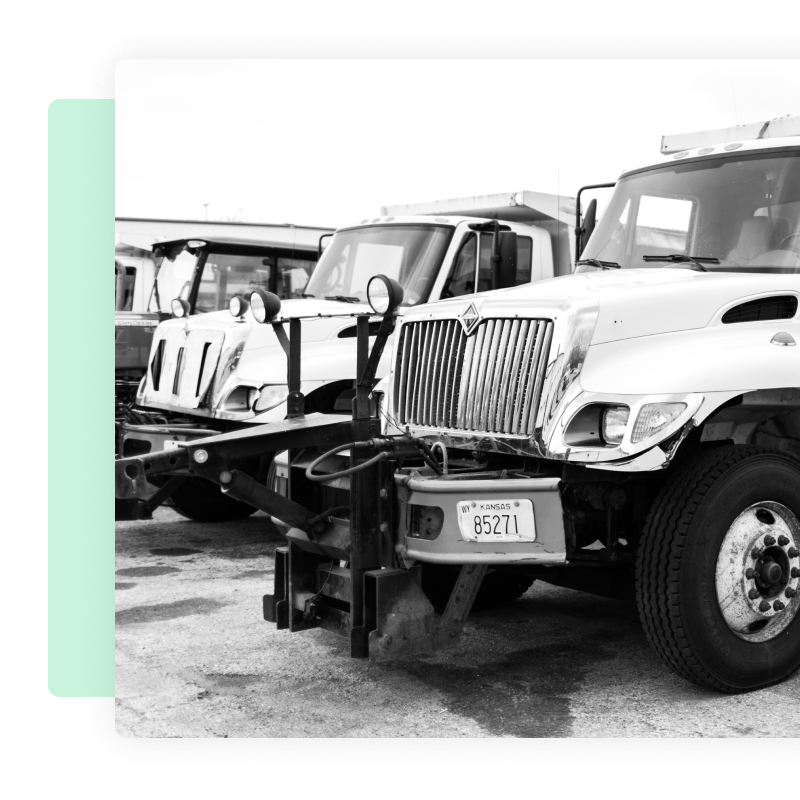Let’s take a look at sustainable fleet management, what it means and a few strategies on how to achieve it, focusing on both easy wins and longer-term changes so you can feel well-equipped to steer your fleet towards a more sustainable future.
What is fleet sustainability?
Fleet sustainability refers to the practice of managing and operating a fleet of vehicles in an environmentally responsible and economically viable manner. Essentially, the goal is to minimize the negative environmental impact of a fleet’s operations while ensuring that the fleet remains cost-effective and efficient.
Fleet sustainability encompasses a varied range of strategies and initiatives designed to reduce a fleet’s carbon footprint, conserve resources and promote long-term financial sustainability. Key components of fleet sustainability include:
- Reducing Emissions
- Alternative Fuels
- Efficient Vehicle Utilization
- Eco-Focused Driver Training
- Maintenance and Repairs for Peak Efficiency
- Route Optimization
- Lifecycle Analysis
- Fleet Management Software
- Eco-Friendly Procurement
- Telematics and Technology for Route Optimization
- Emission Reduction Initiatives
- Sustainable Practices
- Monitoring and Reporting
Much of what comprises fleet sustainability is really just a well-optimized operation: more efficient routes means less time spent on roads and decreased fuel consumption, better maintenance practices mean better fuel economy and less emissions, and so on.
So sustainability isn’t just about having a greener fleet – it’s about creating a more sustainable business as well.
Efficient-friendly is eco-friendly
Track every asset, cut the clutter and run leaner. Turns out that’s good for the planet and your bottom line.
Go further5 easy wins for sustainable fleet management
Immediate Impact
1. Train drivers with eco-driving techniques
Investing in driver training programs that emphasize eco-driving techniques is an easy way to benefit the environment and ensure that your drivers are engaging with their routes in an efficient way. Educate your drivers on the benefits of avoiding high acceleration and harsh braking, maintaining a consistent speed and reducing idling time. These are all simple changes that can lead to immediate fuel savings and reduced emissions.
Immediate Impact
2. Proactively schedule vehicle maintenance
Regular vehicle maintenance can significantly extend the lifespan of your assets as well as improve fuel efficiency and reduce emissions. Implementing a preventive maintenance program to keep your vehicles in optimal condition involves consistent check-ups and maintenance, and can help you save money on fuel and reduce your environmental impact.
Immediate Impact
3. Optimize routes and reduce idle time
Utilize your telematics data to plan more efficient routes and minimize idle time, which not only saves fuel but also reduces wear and tear on your vehicles. Reducing idle time and planning more efficient routes are simple yet effective strategies that have an immediate and positive impact on your fleet’s efficiency and can benefit sustainability in the long term.
Medium-Term Impact
4. Transition to electric
You don’t have to go electric in one fell swoop – consider transitioning a portion of your fleet to electric vehicles so that you can increase your ratio of EVs slowly over time while creating an immediate impact in your fuel consumption. As the technology and infrastructure for EVs improves, so does the potential for long-term sustainability, but even replacing vehicles with EVs as they come up for disposal can create an immediate effect.
Immediate Impact
5. Right-size your fleet
It’s easy to reduce emissions and environmental impact when there are less vehicles to consider. Evaluate your fleet’s size and assess whether any vehicles are underutilized, and then offload them from your fleet to see an immediate reduction in operating costs and emissions. Reducing your fleet size not only lessens your environmental footprint but saves money by adjusting your fleet size to meet the actual demands of your business.
5 Longer-Term Strategies for Sustainable Fleet Management
Long-Term Impact
1. Invest in telematics and fleet management software
Telematics technology provides real-time data on vehicle performance, driver behavior and fuel consumption. Integrating this data into fleet management software like Fleetio allows you to make informed decisions for long-term sustainability. These insights enable you to fine-tune your operations, identify areas for improvement and ensure that your fleet remains as efficient as possible.
Long-Term Impact
2. Consider more electric vehicles
The future of sustainable fleet management is undoubtedly electric. As EV technology continues to advance, consider transitioning a bigger portion of your fleet to electric vehicles. Incentives and charging infrastructure are improving, making this transition more feasible than ever. While the upfront costs of EVs may be higher, the long-term operational savings and reduced environmental impact make them a strategic choice for sustainable fleet management.
Medium-Term Impact
3. Establish green procurement policies
When adding new vehicles to your fleet, even if those vehicles aren’t electric, opt for models with better fuel efficiency and lower emissions. Green procurement policies can have a substantial long-term impact on the sustainability of your fleet. By committing to the purchase of more environmentally friendly vehicles, you contribute to the broader shift toward sustainable transportation and reduce your fleet’s environmental footprint.
Long-Term Impact
4. Implement a clear vehicle cycling strategy
As your fleet ages, replace older, less fuel-efficient vehicles with newer, more eco-friendly models. Gradual vehicle cycling ensures that your entire fleet remains up-to-date and environmentally responsible. Plan your vehicle replacement cycles strategically to make the most of advancements in fuel efficiency and environmental performance.
Long-Term Impact
5. Set sustainability goals and metrics
Define clear sustainability goals for your fleet, like reducing emissions by a defined percentage over a pre-set period of time. Establishing a core set of key performance indicators (KPIs) can help to track your progress and hold your team accountable. Sustainable fleet management is an ongoing journey, and setting concrete goals and metrics is essential for measuring and improving your environmental impact over time.
Track smart. Waste less.
Become a greener, leaner (and meaner) fleet. It all starts with visibility — you can’t track what you can’t see. Get a quick walkthrough with a member from our team.
Catch a demo


